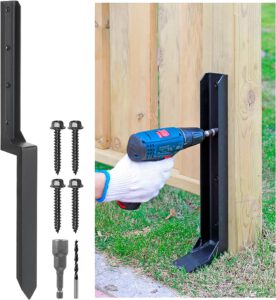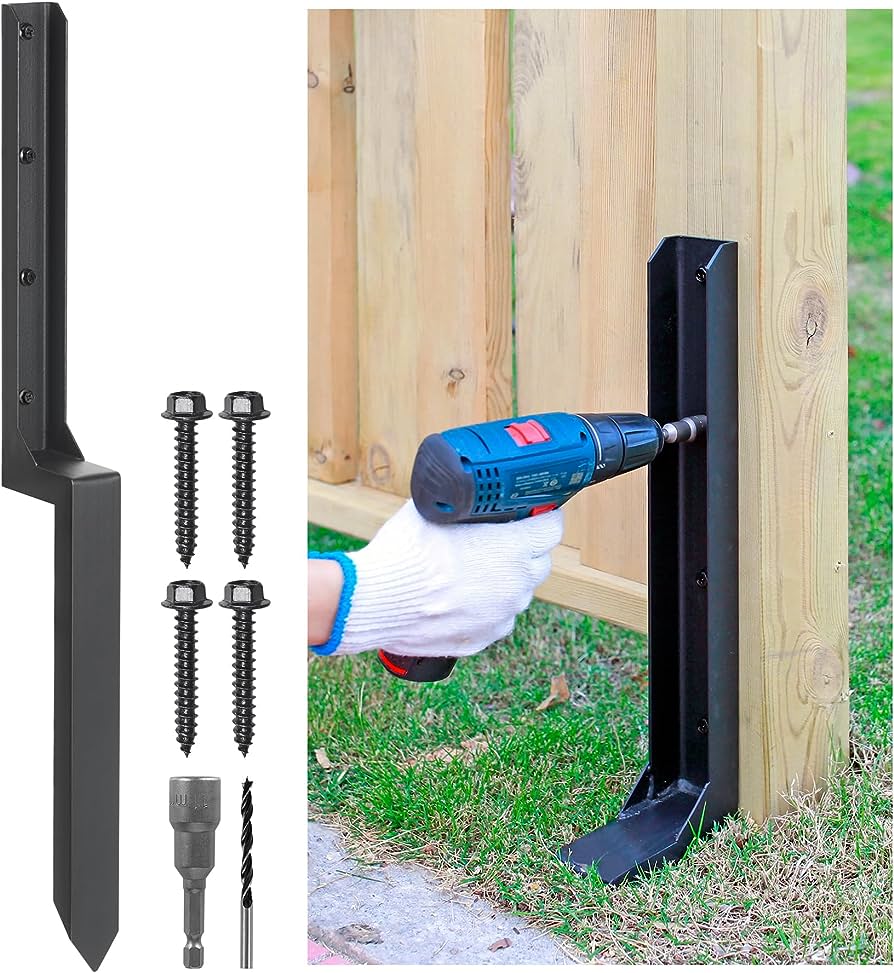Nothing lasts forever, and fences are no exception. Over time, wind, sun, and rain can break down fences and cause them to sag or collapse.

When it comes to Fence Repair you can do several things to extend its life and maintain its appearance. Some of these repairs are very easy, and others require a little more work.
Wood is a durable material that can resist the elements but eventually succumb to moisture damage if left unchecked. Moisture can weaken wood, and even lead to the formation of rot or mold. It’s important to repair any rotten or damaged wooden areas of your home or fence as soon as possible to prevent the issue from worsening.
Both wet and dry rot can occur in any wooden structure, but it is especially dangerous for fences or decks. It can cause the boards to rot and fall, posing a safety hazard to you and your family. Dry rot is the result of a fungus that can easily spread. It is also characterized by splintering and soft, crumbly wood. You should immediately take action to remove dry rot from wooden beams and joists.
Wet rot, on the other hand, is a result of a fungus that attacks wood from within. The fungus eats away at the cellulose fibers that give wood its strength and rigidity, making it brittle and less resistant to water. Wet rot can also result in wood that is soft or spongy to the touch.
To repair rotten or weakened boards, you’ll need to first use a claw hammer or chisel to carefully remove the rotten pieces of wood. Once you’ve removed any wood that is rotting or has significant portions that are coming away, it’s time to apply a wet rot wood hardener to the affected area. Be sure to wear gloves when working with chemical products.
Once the wood hardener has dried, you can then reattach the board to the joists with polyurethane glue. Ensure that the new board is secured correctly to the joists by using a sanding block to shape the filler and make it flush with the rest of the frame. Once the board is shaped, you can then switch to finer grades of sandpaper to smooth out any surface imperfections.
After you’ve repaired any rotten or weakened boards, you can protect your home from future damage by sealing and caulking any exterior wooden areas of your house. This will help to prevent any further deterioration and will keep the exterior of your home looking great.
Leaning or Falling Posts
Often, fence posts are set in concrete footers to keep them weighted down. However, over time weather and other environmental factors can cause the posts to shift out of place or loosen in their holes. This can lead to leaning or even falling fence posts. Once a post starts to fall or lean it can put a lot of stress on nearby posts and cause them to break or come loose as well. That’s why it is important to shore up a leaning or falling fence post as soon as you can.
Depending on the cause of the problem, it may be as easy to fix as adding some extra dirt around the post. But in some cases, the post will need to be reset or replaced entirely. It’s always best to check with your local fencing specialists to see what the best course of action is for your situation.
One of the most common causes of a leaning fence is a rotting post. This can be caused by weather, age, or insects. In some cases, you can save the post by cutting off the rotting portion of the post (often the section underground). Once removed, dig around the post and bury it in fresh concrete to prevent the rot from coming back.
Another common cause of a leaning fence is if the ground on one side of the post is sloped downhill. This can be caused by the ground breaking down under the fence or by wind blowing soil against the post. In this case, you can try to reposition the post by nailing some 2x4s positioned at a 45-degree angle to the post to brace it and hold it upright. Once this is done, you can use a level or carpenter’s level to align the post with the rest of your fence and pour a new concrete footer around it.
If your fence is shared with a neighbor, make sure to talk to them before you start working on it! You will likely need to get access to their side of the fence at some point, so it’s a good idea to let them know what you are doing and maybe even ask them to chip in for half of the repair costs.
Broken Hinges or Latches
Whether it’s from repeated use or the elements, hinges are one of the most common fence components to break. But that doesn’t mean you have to get a new gate – there are a few ways to fix your broken hinges or latch. Some are temporary fixes that you can do at home while others require more work and drilling.
If your gate’s hinges are loose, tightening them may be all it takes to correct the problem. Depending on the situation, you may need to use wood filler or even replace the screws. If the screws aren’t long enough, take them with you to a hardware store and ask an employee to help you purchase replacements that will be a good fit. If the screws are stripped, consider using a screw with a longer diameter or even an entire new hinge.
Loose butt hinges can also be fixed by re-tightening the screws. But if the problem is caused by missing or misaligned hinges, this will be a bigger job and may require replacements. If the latch on your door is missing or hitting the strike plate hole on the door frame too high or too low, you can test this by smearing lipstick on the latch and sticking it to the masking tape on the strike plate. When you close the door, it should leave a mark on the tape where the latch contacts the plate. If the contact is below or above the strike plate hole, you can adjust this by shimming or sanding.
T-hinges, which are found on garden gates, are often used to hold back wooden garden shed doors and other similar structures. They can be heavy, so they aren’t usually found breaking on their own. But they can easily become damaged by the wind, snow or the weight of a heavy gate.
To fix a broken T-hinge, remove the existing screw and replace it with a long screw that is of the same length. If the screw is still too short, you can use a wood dowel of the same diameter as the original screw. The dowel will give the screw something to bite into.
Leaking Water
If a wood fence is left exposed to the elements, it can quickly become damaged and rotted. It’s important to address this issue as soon as you notice it, especially if you see signs of water damage in other areas of your property, such as in your house or garden.
It is possible to make a gray and sagging wood fence look like new again, with a little work and some care. A thorough wash with a power washer and a nourishing coat of oil stain will make it look almost as good as the day it was built.
If the stain you use is semitransparent, it will allow the natural wood color and grain to show through while also preventing sun bleaching and slowing fungal growth. It is also a good idea to coat the ends of the boards and the posts where they emerge from the ground or concrete with wood preservative, as this is where most rot occurs. If you have any loose or cracked boards, reattach them with waterproof glue. Finally, re-screw any protruding nails and countersink the heads to prevent future problems.
Even if the screws used to hold down a chain link fence are rust resistant, they can still become corroded if left exposed for too long. Rusty screws can be a warning sign that there is a problem with the structural integrity of your fence.
In addition to looking unsightly, a leaky fence can also cause significant damage to your home. Leaks that penetrate the foundation of your house may result in mold, rot, or serious cracking and shifting of the foundation and surrounding soil. In some cases, the leaks may even pierce through your exterior walls and into your living or dining rooms.
If you have a neighbor who shares a common fence line with you, it’s a good idea to talk with them about your concerns and determine if they are willing to help with the costs of repairing or replacing the fence. Depending on the situation, your neighbors may agree to split the cost or even agree to pay for your entire fence repair.

